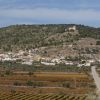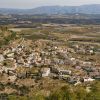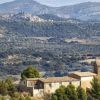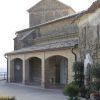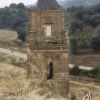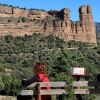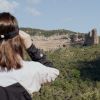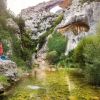PUEBLOS
Salas Altas
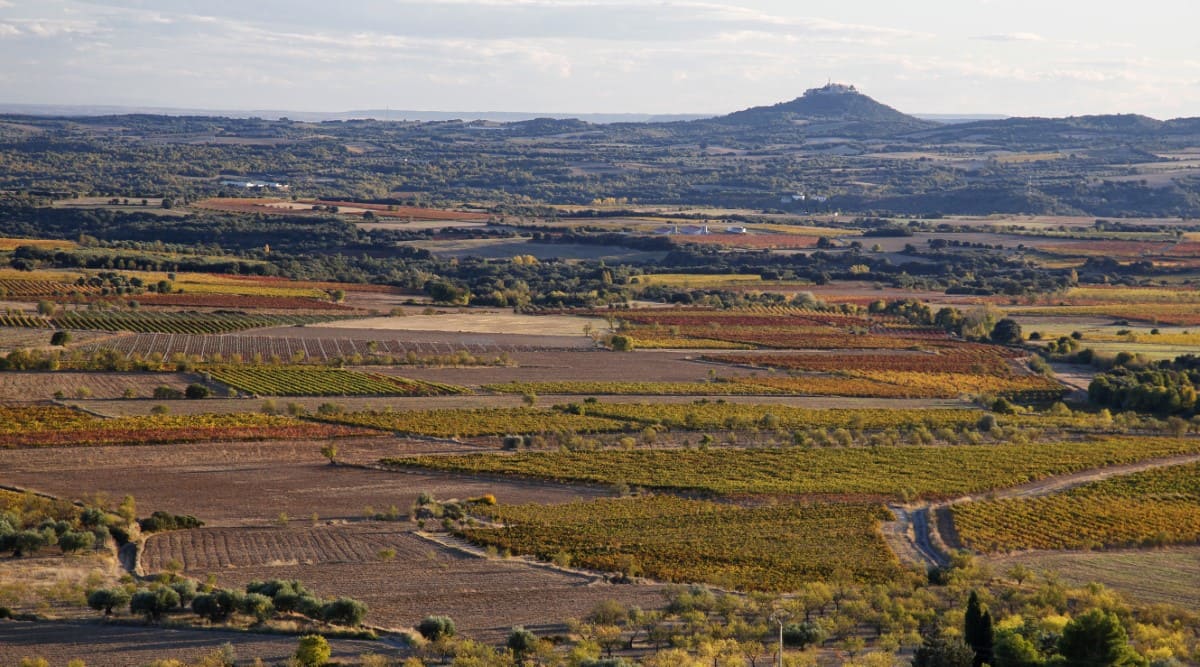
Salas Altas sits on the border of two very different territories; rolling agricultural plains covered with a mosaic of Mediterranean crops and the proud peaks of the Candelera mountain range.
The area is currently given over almost entirely to the production of wine. The origins of vine cultivation in Somontano date back to Roman times as proven by remains from archaeological sites such as El Plano, Lazán and Novalla, all within the environs of Salas Altas.
Traditionally the plots of cultivated vines were small and only served to provide the owner with wine. However, excellent climatic conditions and the quality of the soil led to a boom in commercial vine cultivation in the 1960s.
The dramatic relief of the Candelera Mountains determined the urban development of Salas Altas. The layout of the houses, adapted to overcome the steep terrain so as to avoid using the flatter, cultivable land, gives rise to an unusually long and narrow centre. It is divided into small neighbourhoods that are noticeably different; Bariomato, ra Balsa, Entremuro, ra Carretera, Calle de la Iglesia and Calle Baja.The streets of Salas Altas boast a number of magnificent houses that are known locally as “grandes” with elegant facades and harmonious structure. They have a living space, a storage area and a small outdoor courtyard that was often used for growing vegetables.
The steep streets of the Entremuro area reveal charming nooks and crannies as they lead towards a footpath to La Candelera chapel. Once the parish church, it was eventually replaced by the church of Santa Ana, erected in 1612 in the late Gothic style, due to its distance from town.
At each end of the village there are fountain known as “ro Puzo” and “Fuente d’abajo.” The name of the first makes reference to the well (pozo) excavated from the rock, whose spring feeds the fountain. Until running water reached the houses, these fountains provided all the village’s drinking water, for man and animal, as well as water to wash clothes. Half of the villagers went to one fountain, and the rest to the other.
Azara
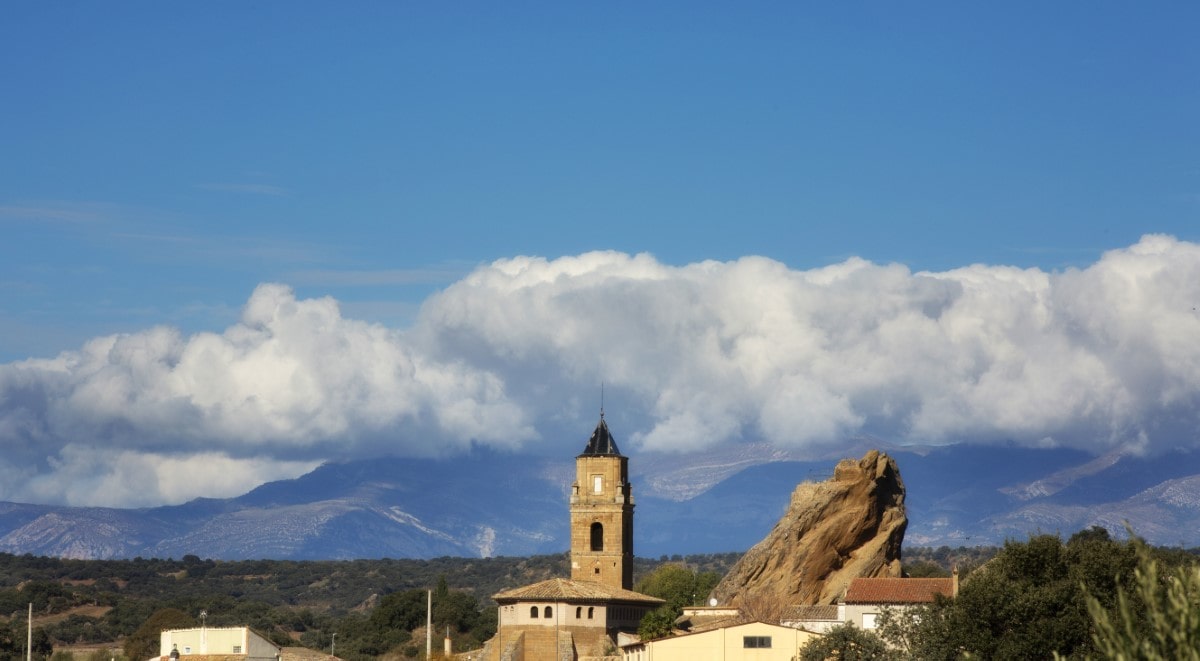
The undulating form of the Clamor canyon is dotted with sandstone rocks that have been rounded off and made smooth by the effects of erosion of millions of years. This has given rise to an unusual landscape. Some of the rocks are unique and are the base of legends such as the story of the appearance of Santa Lucia. Others were used as lookout points and fortresses like the outcrop of Santa Margarita.
Azara has a Moorish past similar to that of the neighbouring villages of Abiego, Azlor and Peraltilla and, like them, was also conquered by the troops of Pedro I in the year 1095. This rich history can be seen in the remains of its fortress and parish church, both of which date back to the 16th century and follow the principals of the late Gothic style.
The name Azara has a pleasant ring as do the older versions of the name; Azar, Azahara, Assara and Zaara. All hint at a peaceful and sunny spot with a gentle landscape and a tapestry of cultivated fields. These small plots, located between rolling hills, are dedicated to the cultivation of cereals, almonds, vines and olives. Fertile allotments are irrigated thanks to ingenious methods of collecting water. Deep “tanks” have been excavated from nearby rocks in order to store rainwater. In addition, and a number of wells still bring water to the surface via an old wooden lever system typical of this area known as the ceprénes.
The village of Azara is concentrated in one main street that runs from the church of Santa Lucia to the square. Another road leads to a more modern, gardened area. A stroll through the streets reveals a number of attractive old houses made from stone and brick, with beautifully constructed semicircular doorways. These houses are typical of the region and always incorporated a place to make and store wine, which would come to the light full of aroma and colour after a long and peaceful rest in dark cellars.
Morrano

The town of Morrano lies on the banks of the River Alcanadre, between the tributaries of the Calcón and the Mascún. In addition to the beautiful period signposts and some interesting civil buildings, the 12th century church of San Pedro is worth a visit. The original Roman building had various extensions added to it between the 16th and 18th centuries. One of the more attractive additions is the final section of the church tower with its traditional Mudejar decoration, which is a distinct improvement to the plainer brickwork of the original two sections.
Morrano is the departure point for trips into the canyon of the Peonera.
Rodellar

Surrounded by the crevasses of the Mascún canyon, the village of Rodellar emerges from the rocky setting, and is simply one of the most stunning spots of the Sierra de Guara.
Rodellar is one of those magical places that leave the visitor with a sense of having seen something special and unique. It is split into two neighbourhoods – one belonging to the church and of the other to Honguera - both of which display fine examples of traditional architecture, characteristic of this area of Somontano.
Against a backdrop of cliffs and oak trees, the voluminous parish church of San Lorenzo emerges. The 17th century builders took advantage of a previous Roman building as a base for its construction.
In the same vicinity lies the chapel of the Virgen del Castillo (Virgin of the Castle), which rises out of the cliffs of the Mascún canyon. Also worth visiting are the medieval bridge of "Las Cabras" and the uninhabited hamlet of Cheto.
Rodellar is a main attraction for lovers of outdoor sporting activities, with climbing and hunting both being popular there. There are designated game reserves for hunting (boar, partridge, thrush, etc.) and fishing zones where the method of “catch and release” is followed. There are rock-climbing areas of importance attracting climbers from across Europe. The Rodellar School of climbing is based here, as is the “Vía Ferrata” of the Virgen del Castillo, which is an equipped aerial route that allows non-climbers to experience the thrill of the vertical walls of Rodellar. It goes without saying that the views are spectacular.


